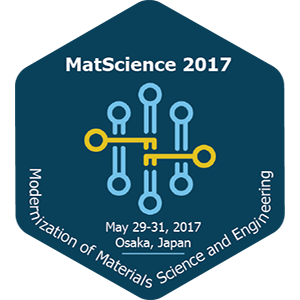
Chun Yuan Chot
Monash University, Malaysia
Title: Development of Molybdenum Trioxide-based Photoanodes with Charge Storage Capacity for Photoelectrochemical Water Oxidation under Illuminated and Non-Illuminated Conditions
Biography
Biography: Chun Yuan Chot
Abstract
Photoelectrochemical (PEC) technology is one of the most promising methods that converts solar irradiation into storable chemical energy in the form of hydrogen (H2) via water splitting reaction. To date, the PEC technology has been studied extensively in terms of the synthesis of photoelectrodes such as synthesis approaches, structural modifications, and improvement of photoresponses. However, the PEC technology is still limited by one of the most challenging bottlenecks where all PEC cells can only be operated under well-illuminated condition. Generally, light source is the most crucial element in a PEC cell as it initiates the photoreactions and producing photogenerated charge carriers. When the light source used is withdrawn (i.e. non-illuminated condition), all the photoreactions will be terminated instantaneously. Therefore, there is a growing significance in enabling the operation of PEC technology under non-illuminated condition via the rational design of photoelectrodes for efficient solar energy conversion and storage. Recently, molybdenum trioxide (MoO3) has attracted numerous research attention due to its unique layered crystalline structure that leads to charge storage capacity in PEC technology application. Within the MoO3 structure, a portion of the charges could be stored in the layered crystalline structure via intercalation (MoO3 + xNa+ + xe- à NaxMoO3) during the well-illuminated condition. Whilst the stored charges will be released from the molybdenum bronze (NaxMoO3) and continuously flow to the counter electrode via de-intercalation (NaxMoO3 à MoO3 + xe- + xNa+) during non-illuminated condition. Thus, the main aim of this work was to synthesize thin films of MoO3 via the aerosol-assisted chemical vapour deposition (AA-CVD) method for application as photoanode used in PEC water splitting. This was followed by a systematic optimisation of the ultrasonication time on the precursor colloidal suspension, and annealing temperature on the eventual crystalline MoO3 structure formed. FE-SEM images showed that the MoO3 thin films that are synthesized from the AA-CVD method exhibited a 3D plate-like crystalline structure. Further electrochemical characterisations measured that the AA-CVD synthesized MoO3 thin films possessed a high charge storage capacity of 1.22 mC/cm2 and a low charge transfer resistance of 87.6 Ω at the optimum ultrasonication time of 25 min and annealing temperature of 550o.

